Videos
How public interest technology erased 21,000 wrongful convictions at once
When the ACLU of Massachusetts joined with a public interest technologist, the odds were against them—yet they scored single largest dismissal of wrongful convictions in U.S. history.
How public interest technology erased 21,000 wrongful convictions at once
When the ACLU of Massachusetts joined with a public interest technologist, the odds were against them—yet they scored single largest dismissal of wrongful convictions in U.S. history.
Transcript
MATTHEW SEGAL: It took a village to taint over 21,000 cases, but it also took a village to address them.
SEGAL: It’s always the advocates who have to come forward with a reason for why things should change.
SEGAL: Without that information, it is very difficult to persuade people that things need to change, and they do.
[Multiple data sets and pie charts flash by, forming the title ‘Justice by the numbers.’]
[on-screen text: September 2012. Aerial video of bridges, cars, and office buildings in downtown Boston. A man watches news footage at a desk.]
NEWS REPORT: Massachusetts officials are broadening the investigation into a drug lab scandal. Annie Dookhan is accused of admitting she faked drug sample results.
GOVERNOR DEVAL PATRICK (TV INTERVIEW) Drug samples were not handled properly, and those drug samples were the centerpiece of convictions and charges. So, that is very, very troubling and very serious.
MASSACHUSETTS ATTORNEY GENERAL MARTHA COAKLEY (TV INTERVIEW): Annie Dookhan’s alleged actions corrupted the integrity of the entire criminal justice system.
SEGAL: I’m Matthew Segal. I’m legal director for the ACLU of Massachusetts. One of the key questions in all this is why did it take so long for this news to come out? So, one thing that would be helpful to do is to start at the beginning, which was in November 2003.
Dookhan was hired to work for the Department of Public Health. She did a volume of testing that was not humanly possible to do, and that started pretty early on. Apparently, she wasn’t doing the testing. That kind of misconduct is called “dry-labbing”.
[A highlighted headline of a Washington Post article reads “How a lab chemist went from ‘superwoman’ to disgraced saboteur of more than 20,000 drug cases”, followed by the highlighted text “… she tripled the productivity rates of her colleagues by not actually testing all the drugs.”]
People were being prosecuted, and convicted, and sentenced, often to prison, based on evidence that had been invented.
By 2009 to 2011, we know that people started to raise red flags about Annie Dookhan. And yet, nothing was done to stop it. And then in June 2011, Dookhan was caught red-handed. She was caught checking out samples that hadn’t been assigned to her. Even then, she was permitted to keep working at the lab a little bit longer. And finally, it’s in September 2012 that Dookhan is arrested. And now we know there has been this enormous fraud within the department of public health, and that this fraud has impacted thousands of cases.
[A whiteboard listing relevant dates. November 2003 and September 2012 are circled in red. Also in red: ‘Almost a decade of misconduct.’]
People were unfairly convicted of drug offenses, which is bad enough. And then on top of that, the system didn’t do a good job of helping them to get out from underneath those wrongful convictions. It was on them to fix it. It was on them to find lawyers. It was on them to come to court. And we thought that was backwards. In January 2014, we filed a case called Bridgeman against the district attorney for Suffolk County.
[on-screen text: Supreme Judicial Court. Oral Arguments, January 8, 2015.]
JUDGE: Good morning, Mr. Segal.
SEGAL (IN COURT): Good morning, Mr. Chief Justice.
SEGAL (INTERVIEW): The thing we asked for was a comprehensive remedy, not a case-by-case remedy. And that would put the burden on the state and not the defendants to address this. In 2015, we got the first decision in the Bridgeman case from the Supreme Judicial Court. The court did not accept our request to take a comprehensive approach. In their view, case-by-case, one at a time, is how the system always works, and how it should always work. Although we didn’t achieve the comprehensive remedy, we did achieve something. We got the court to urge the district attorneys to begin working on a case list. Amazingly, when we filed this lawsuit, there was still no comprehensive list of Dookhan’s cases. The data kept by law enforcement and by the lab was so poor that it was hard for them to create case lists. You don’t see this elsewhere. In other states, you can run a search for which of the cases that, you know, this chemist worked on. Here, that was not possible. The suggestion was, well, what if we use court data about drug convictions in Massachusetts to help make sure we’re identifying all of Dookhan’s cases. And it was agreed to that the trial court in Massachusetts would provide data on every single drug case in Massachusetts during Annie Dookhan’s tenure. So, it was a combination of having that data from the court, and then getting case lists. And once we had that, we knew that there would be an opportunity to understand more about the Dookhan cases than anyone had previously understood. And so finally, nearly four years after Dookhan was caught red-handed at the lab, we have case lists. And that allowed us to know for the first time how many wrongful convictions there were out there. It turned out there were 24,000 or so Dookhan convictions.
NEWS REPORT: The ACLU of Massachusetts says the way to restoring justice is to toss out all cases linked to the former state chemist.
SEGAL (TV INTERVIEW): Unless there’s a comprehensive solution to this problem, the vast majority of these 24,000 cases are never even going to be challenged.
SEGAL: Ever since going to law school, I’ve thought of the job as translating pure logic, pure mathematical thought, into words that will be persuasive to judges. So, I had certain ideas and thoughts about wanting to use data sets for our case. Starting with the data, you translate that to statistics and affidavits, but then you translate that to an argument.
[on-screen text: Adriana Lafaille, Staff Attorney, ACLU-Massachusetts.]
ADRIANA LAFAILLE: I was part of the team of attorneys that worked on the Bridgeman litigation, and, in particular, I worked closely with Paola Villarreal.
PAOLA VILLARREAL: My name is Paola Villarreal. I am from Mexico City. I’m a systems programmer, but also like I do a lot of data science, and data analytics, and visualizations. I applied for the Ford-Mozilla Open Web Fellowship, the premise of it is what happens when you put technologists in the hands of organizations like the ACLU.
[on-screen text: The Open Web Fellowship, a collaboration between the Ford Foundation and Mozilla, brings together the best emerging technology talent with civil society organizations to advance justice.]
PAOLA VILLARREAL: I applied for the Open Web Fellowship, and I got it. And it brought me to Boston to work with the ACLU. The data was very, very hard to clean. It came from all over the state, different departments and different formats, different structures. It was a mess. So, if we wanted to have a more detailed explanation and a more detailed analysis, I had to spend this time cleaning it up and also integrating it in a single database.
SEGAL: To turn these disparate, disorganized data sets, not compiled by data scientists, but compiled by legal professionals—which I can’t speak for Paola, but I would imagine, is an absolute nightmare from a data perspective. And, not only that, but there was a very limited time to turn things around.
[Paola works with data on her laptop both at her apartment and with Adriana at the ACLU office.]
VILLARREAL: It was so, so hard. I had been working for 20 hours a day in some cases. It took three weeks to clean. So after I did that, I told Adriana like, “Hey, we are ready, we have all this information in a single database, and we can start to answer more and more questions.” But the deadline was approaching. It was, I think, one week and a half away.
[Adriana and Paola list Massachusetts counties as they analyze the data. Time to deadline: 10 days.]
VILLARREAL (IN SPANISH): For Bristol, 2170.
LAFAILLE: I was skeptical and unsure of whether we would actually produce anything that was valuable. It was only once we really dug in with Paola and began analyzing the numbers, that it started to become clear that this was something that would be really valuable.
VILLARREAL (IN SPANISH): They aren’t drug cases, are they?
LAFAILLE (IN SPANISH): Right. We can look at a case ID.
[Adriana and Paola discuss spreadsheets in different locations and at different times of day and night. As time passes the text on screen decreases from 10 days down to 4 days.]
VILLARREAL: It was a very stressful time. For some moments I was like, “Oh, I can’t do it.” Then I started looking at the names of the people that were there in the database. It was the thing that made me continue to work. It was like bringing them back to life. These people have been forgotten and they were like, abandoned in a database, who knows where. What I could do was to try to make it right.
[Adriana and Paola working late at night. Time to deadline decreases from 4 days down to zero.]
SEGAL: Paola and Adriana found that in over 60% of the cases, the only drug offense was for possession. I mean, sometimes, there were other charges in these cases, but the only charges that we were asking the court to overturn were the drug charges. And now we knew that in most of the cases the drug charges were for possession.
LAFAILLE: The overwhelming majority of them, more than 90%, were prosecuted in District Court as opposed to Superior Court. This means that they’re offenses that prosecutors had not thought important enough to prosecute in the Superior Courts.
[on-screen text: Supreme Judicial Court, Oral Arguments, November 16, 2016.]
SEGAL: When we were finally able to go in front of the Supreme Judicial Court and argue the case, we were able to present a different kind of a story.
SEGAL (IN COURT): My argument today will address why a comprehensive remedy is needed to resolve this crisis given that we have roughly 24,000 cases that have gone unaddressed, given that it has been over four years since Annie Dookhan’s misconduct was disclosed, and given that people are suffering every day from the collateral consequences of cases wrought largely in District Court.
SEGAL (INTERVIEW): All we’re doing is hurting poor people. We’re hurting people who are convicted of drug possession. We’re hurting people who are convicted of non-serious crimes. Why? Why are we doing this?
[on-screen text: November 16, 2016 animates through to land on April 17, 2017.]
DEMOCRACY NOW NEWS REPORT: In what may be the single largest dismissal of wrongful convictions in U.S. history, Massachusetts prosecutors announced Tuesday they’re going to throw out 21,587 criminal drug cases.
LAFAILLE: We saw the court recognize that, in order for justice to be done, vast numbers of cases would need to be dismissed.
SEGAL: It was just a remarkable moment for justice for thousands of people and for the Commonwealth of Massachusetts. The opinion mentioned Paola’s work, which is extremely rare. To me what it represents, that Paola’s work is in there is, it was incredibly influential and honest.
VILLARREAL (READING OPINION): An analysis conducted by Paola Villarreal, a data science fellow at the American Civil Liberties Union Foundation of Massachusetts revealed that approximately 62% of the adverse drug dispositions for Dookhan defendants were for possession alone.
VILLARREAL (INTERVIEW): They mentioned my work, my name.
SEGAL: We went from zero convictions overturned in our litigation to over 21,000 with this order. This pie-in-the-sky idea that we put in our papers in January 2014 was now essentially the law. People are persuaded by different things. Some people are persuaded by numbers and some people aren’t. But everyone is persuaded by truth, or at least should be. And we were able to provide a true story about the injustice so many thousands of people are facing. And that is a story that was built on data.
[on-screen text: Public interest technology helped make history in the Bridgeman litigation. The field of public interest technology envisions a world where technologists, like Paola, bring their technical expertise and ethical experience to other sectors, including civil society, to create a more just world. Shortly after this case, another drug lab scandal hit Massachusetts. Using similar data science analysis, the ACLU of Massachusetts helped overturn more than 24,000 additional charges.]
CREDITS
Director / Producer
Jessica Reynolds
Producer
Mona Iskander
Producer / Archival Producer
Claire Kinnen
Editors
Emily Wilson
Robert Halstead
Graphics and Animation
Robert Halstead
Director of Photography
Nikki Bramley
Austin Debesche
Assistant Camera / Second Camera
Yahna Harris
Assistant Camera
Lisa Vidal
Sound
John O’Connor
Grip / Production Assistant
Richard Hawke
Scott Brawn
Voiceover
Robert Halstead
Color Correction
Henninger Media Services
Sound Mix
AudioNiche / Nicholas Montgomery
Music
De Wolfe Music Library
Accessibility
GA Accessible Media
Archival
AP Archive
AP Images
Democracy Now!
Getty Images
Massachusetts Supreme Judicial Court
NBC
NECN
Reuters
Special Thanks
Stacey Anderson
Jean Cook
Kade Crockford
Adriana Lafaille
Carol Rose
Matthew Segal
Michele Shevin
Jenny Toomey
Vivek Trivedi
Paola Villarreal
John Ward
Carl Williams
Malaika Woluchem
End of transcript.
Accessibility Statement
- All videos produced by the Ford Foundation since 2020 include captions and downloadable transcripts. For videos where visuals require additional understanding, we offer audio-described versions.
- We are continuing to make videos produced prior to 2020 accessible.
- Videos from third-party sources (those not produced by the Ford Foundation) may not have captions, accessible transcripts, or audio descriptions.
- To improve accessibility beyond our site, we’ve created a free video accessibility Wordpress plug-in.
Video collections

Ideas at Ford
Hosted at the Ford Foundation Center for Social Justice by New York Times columnist Charles M. Blow, Ideas at Ford is a conversation series exploring complex social justice issues and solutions.
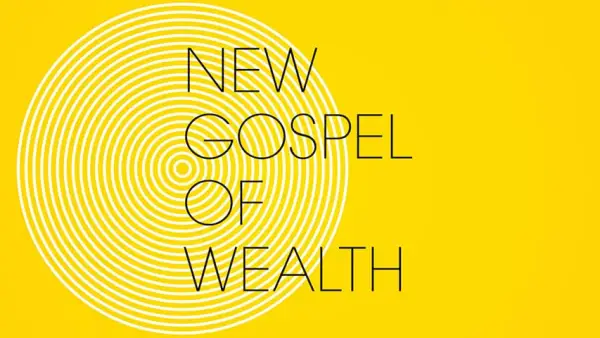
New Gospel of Wealth
Transforming philanthropy for the 21st century requires a bold vision: one that moves giving from generosity to justice. Generosity is focused on helping someone in need; justice is about solving the problems that created the need. This series features leaders sharing their thoughts about the future of philanthropy.

On What Matters
#OnWhatMatters is a conversation series between Ford and social justice leaders on the frontlines of change.
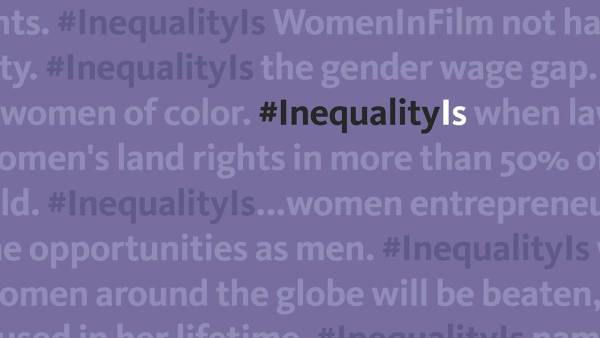
InequalityIs
In the #InequalityIs video series, a wide range of people define what inequality means to them, covering the many challenges that need to be overcome in the fight for equality, justice, and dignity, and creating a future of work that works for all.
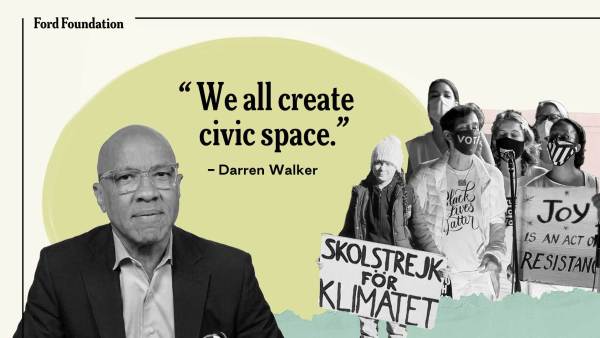
Independent Videos
Ford Foundation produces videos about a wide range of critical topics to advance justice.
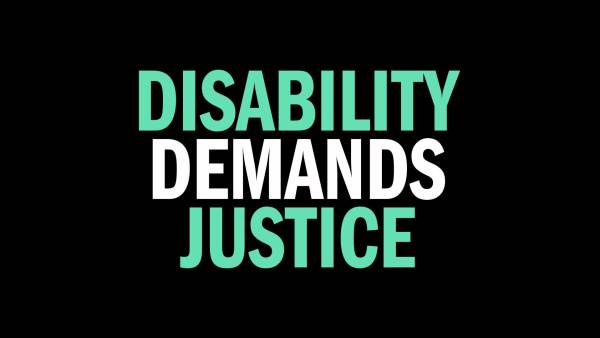
Disability Demands Justice
Without disability justice, there can be no racial, economic and gender justice. Real change requires that no one is left behind. Tackling inequality with an intersectional lens can help create a fully inclusive world.
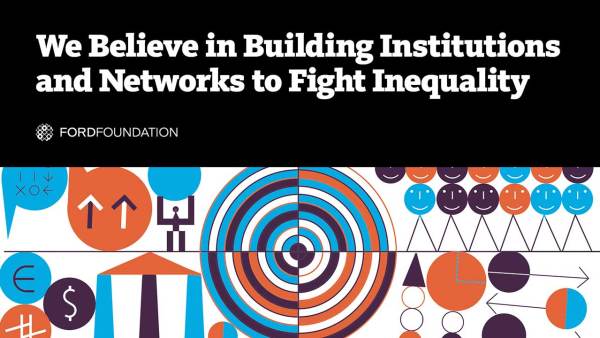
The BUILD Program – Flexible Long-Term Funding
Our Building Institutions and Networks (BUILD) initiative is a grantmaking approach focused on helping social justice organizations become stronger and more resilient over time. BUILD provides flexible funding and fosters connections to other organizations working with ideas that are changing the world.

Art Is Justice
Art has limitless power to dismantle inequality and help bring about positive social impact. This series pays tribute to the musicians, the dancers, the actors, the writers, the visual artists, and the painters, as well as the grassroots organizations and activists, who are using art for social change.
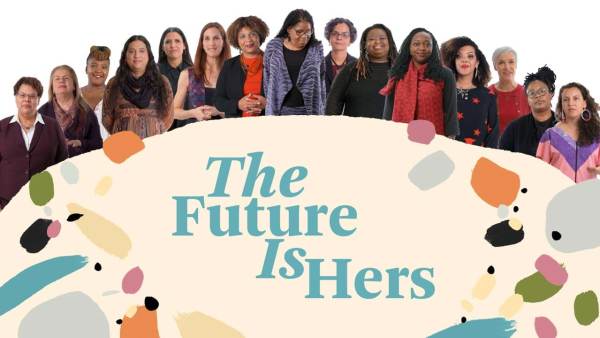
The Future Is Hers
Around the world, women have become an unstoppable force for social change. They are rising up to create solutions to the biggest issues facing society, from institutional racism to abortion rights. In the #FutureIsHers, we spotlight the women rewriting the rules, redefining power and reimagining what equality looks like.
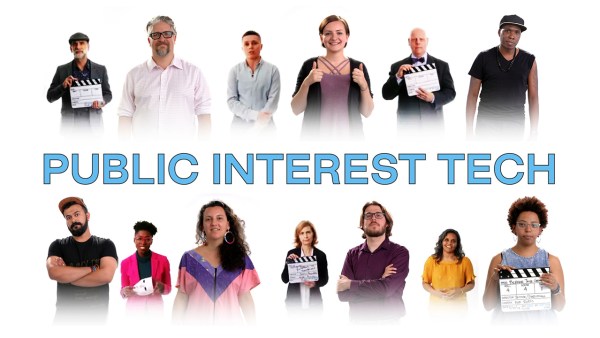
How can Public Interest Tech change our world for good?
Public interest technologists work to ensure tech is for the public good and helps dismantle inequality. This series shows how a team of talented and dedicated people across academia, civil society, government and private sectors needs to be involved in bridging the gap between technology and social justice.
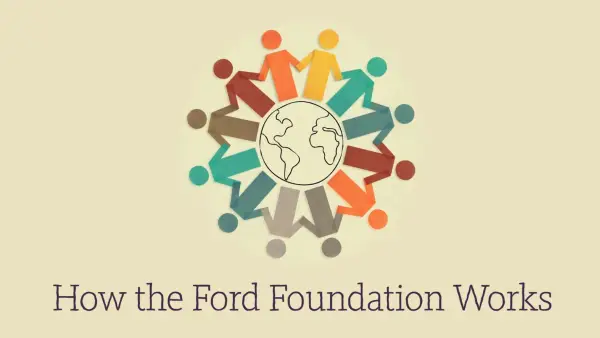
How the Ford Foundation uses grants to tackle inequality
Everyone deserves to contribute to society, have their voice heard, and fulfill their potential. Dismantling the systems and structures that prevent people from these opportunities is core to Ford’s work. Through our endowment, we make grants, mission-related investments and program-related investments to support organizations working to tackle inequality.


